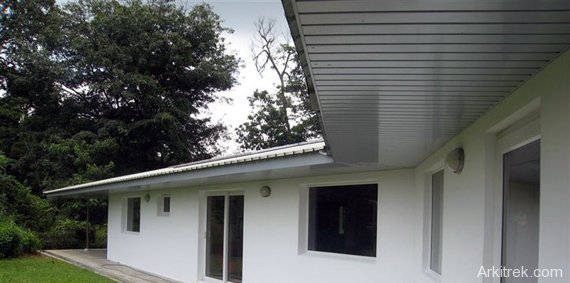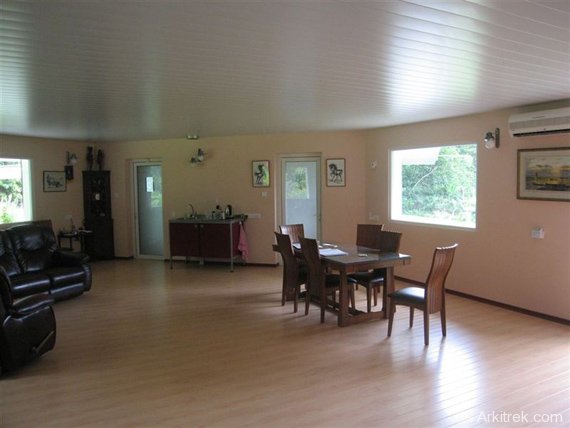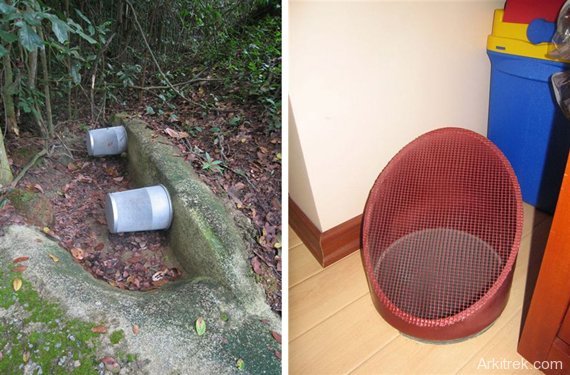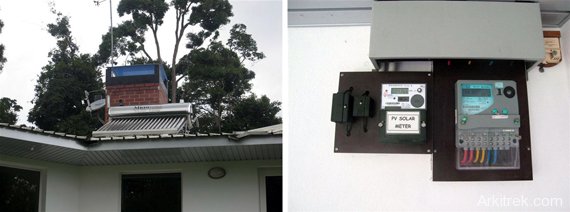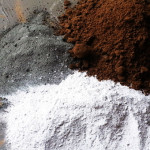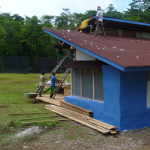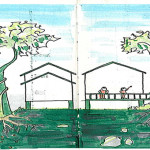Cooltek
Energy efficiency isn’t normally a consideration in building Malaysian homes, which is why it came as no surprise that the first good example I have found was built by Expats who called their home Cooltek.
Harry and Stephanie Boswell decided that retirement in the tropics was more appealing than in the UK. They moved to Melaka in Malaysia, bringing everything with them including a brand new Toyota Prius and their environmentally friendly philosophy.
The brief for Cooltek was simple. It must be air-conditioned to give respite from the heat and humidity and therefore it must be air sealed (to control humidity) and insulated (to control loss of coolth).
Cooltek would also use passive design principles to further increase efficiency and would minimise materials quantities to reduce embodied energy.
My first impression was of a bungalow obviously designed by an engineer. It is a neatly packaged white box that has more in common with kitchen appliances than architecture.
To my pleasant surprise, the interior belied the exterior. About half of the habitable footprint is taken up by an open plan lounge with excellent natural lighting and no fixed furniture.
While Harry rolled a couple of chairs up to a table Stephanie brewed a cuppa using a mobile plug-in kitchen unit. Together we discussed the design features of Cooltek.
(All construction photos courtesy of Harry and Stephanie Boswell)
The first problem they had was encouraging the engineer to design a lightweight house that would reduce embodied energy. Their second problem was finding a builder who could build load bearing aerated concrete block walls.
The floor is insulated with polyurethane foam. As cold air tends to sink, more ‘coolth’ is lost through the floor than anywhere else. The white aluminium ceiling is air sealed and also helps reflect daylight into the home. The roof space is insulated with mineral wool to reduce thermal gain from the sun.
Windows are double glazed and imported from the UK. I think we can excuse their travel carbon footprint on grounds of their potential for promoting energy efficient design. Windows are only put on the north and south elevations and protected by a recess and large overhang. This means they are only briefly exposed to the heating effect of the sun. The flat reflective soffit also helps bounce daylight into the building.
Details feel engineered, minimal and elegant. Reminds me of a comment by a washing machine engineer friend of mine who maintains that “elegance is strength”. Frameless sandblasted glass doors which do not reach the floor are rational too – They allow that expensively conditioned air to go further and also help remind you when you’ve left the lights on.
Fresh air is ducted into the house through an underground chamber pre-cooling the air to about 27ºC. This is 6-8 ºC cooler than average daytime temperatures meaning that the air conditioner has less work to do.
Solar water heaters (left) are a no-brainer in the tropics if you like hot showers. Also installed are photo-voltaic panels (PV) which need an inverter (right) before connecting to the main. There is a meter to measure output. PV still only makes economic sense if, like in this case, you have grant assistance.
Finally here is the evil and delicious air-conditioner. The photo doesn’t really convey that this is the dog’s nuts, an efficient unit which uses the eminently more environmentally friendly refrigerant known as R410A. On the right are some delightful steps made out of half-round ceramic gutter liners, an inventive finishing touch.
In conclusion, Cooltek is a textbook example of a low energy house, embodying best practice in passive and active design. Of course performance could be increased further but all the basic principles are there. This is a great achievement.
Importantly the building doesn’t rest on completion. Built-in sensors and meters continually collect data on weather, internal environment and energy use. This data will help argue the case for more such buildings.
This performance monitoring has been supported by IEN consultants from KL who also host the official Cooltek homepage.
My only critique is a subjective one; that it’s an unconventional choice for an Expat to move to the tropics from a cold country and chose not to enjoy year round outdoor living.
My approach would have been to aim for the best of both worlds, seal and insulate your bedrooms and study perhaps, while leaving kitchen and dining space open to the sweet air. You pays your money you takes your choice.
Harry and Stephanie should be applauded, not only for building an iconoclastic home but also for freely sharing their expertise so that others might follow.
Related posts

